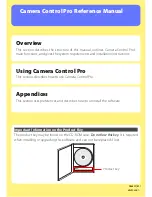
Starting Admission Control
Admission control operates on a router-wide basis rather than a per-virtual-router basis.
Admission control of resources begins when either of the following occurs:
•
You configure resource-related information about an interface, including bandwidth
(either total bandwidth or MPLS reservable bandwidth), flooding frequency, flooding
threshold, administrative weight, or attribute flags.
•
MPLS begins to use admission control services; for example, by attempting to set up
a constraint-based LSP.
Admission Control Interface Table
Configuring bandwidth on an interface creates an entry for the interface in the admission
control interface table. Each entry in the table stores the following information per
interface:
•
Maximum (physical or line-rate) bandwidth
•
Maximum reservable bandwidth
•
The following information per IP class (currently a single, default class)
•
Total available (unreserved) bandwidth
•
Available bandwidth at each MPLS priority level
•
Resource flooding threshold and period
The resource flooding threshold and period together control the flooding of the resource
information by the IGP protocols, IS-IS and OSPF.
Configuring Traffic-Engineering Resources
You can configure the following resource-related information about an MPLS interface
(at either the major interface or subinterface level):
•
Bandwidth—Total bandwidth that can be reserved on the interface
•
Flooding thresholds—Sets of absolute percentages of total reservable bandwidth that
trigger the new bandwidth value to be flooded throughout the network; flooding is
triggered when bandwidth increases past any up threshold value or decreases past
any down threshold value
•
Flooding frequency—Periodicity with which the bandwidth value is flooded, apart from
any flooding due to value changes
•
Administrative weight—Weight assigned to the interface that supersedes any assigned
by the IGP
•
Attribute flags—32-bit value that assigns the interface to a resource class and enables
a tunnel to discriminate among interfaces by matching against tunnel affinity bits
Copyright © 2010, Juniper Networks, Inc.
254
JunosE 11.2.x BGP and MPLS Configuration Guide
Summary of Contents for JUNOSE 11.2.X BGP AND MPLS
Page 6: ...Copyright 2010 Juniper Networks Inc vi...
Page 8: ...Copyright 2010 Juniper Networks Inc viii JunosE 11 2 x BGP and MPLS Configuration Guide...
Page 38: ...Copyright 2010 Juniper Networks Inc 2 JunosE 11 2 x BGP and MPLS Configuration Guide...
Page 192: ...Copyright 2010 Juniper Networks Inc 156 JunosE 11 2 x BGP and MPLS Configuration Guide...
Page 242: ...Copyright 2010 Juniper Networks Inc 206 JunosE 11 2 x BGP and MPLS Configuration Guide...
Page 244: ...Copyright 2010 Juniper Networks Inc 208 JunosE 11 2 x BGP and MPLS Configuration Guide...
Page 310: ...Copyright 2010 Juniper Networks Inc 274 JunosE 11 2 x BGP and MPLS Configuration Guide...
Page 356: ...Copyright 2010 Juniper Networks Inc 320 JunosE 11 2 x BGP and MPLS Configuration Guide...
Page 418: ...Copyright 2010 Juniper Networks Inc 382 JunosE 11 2 x BGP and MPLS Configuration Guide...
Page 524: ...Copyright 2010 Juniper Networks Inc 488 JunosE 11 2 x BGP and MPLS Configuration Guide...
Page 544: ...Copyright 2010 Juniper Networks Inc 508 JunosE 11 2 x BGP and MPLS Configuration Guide...
Page 608: ...Copyright 2010 Juniper Networks Inc 572 JunosE 11 2 x BGP and MPLS Configuration Guide...
Page 672: ...Copyright 2010 Juniper Networks Inc 636 JunosE 11 2 x BGP and MPLS Configuration Guide...
Page 674: ...Copyright 2010 Juniper Networks Inc 638 JunosE 11 2 x BGP and MPLS Configuration Guide...
Page 716: ...Copyright 2010 Juniper Networks Inc 680 JunosE 11 2 x BGP and MPLS Configuration Guide...
Page 717: ...PART 6 Index Index on page 683 681 Copyright 2010 Juniper Networks Inc...
Page 718: ...Copyright 2010 Juniper Networks Inc 682 JunosE 11 2 x BGP and MPLS Configuration Guide...
















































